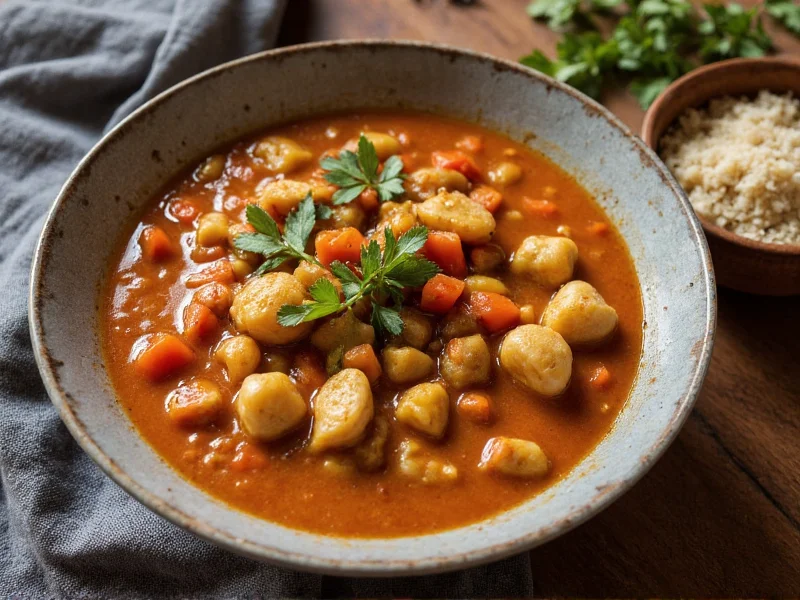When people search for \"crawl stone soup,\" they're typically looking for information about the well-known \"stone soup\" folktale but have encountered a phonetic misunderstanding. This confusion often stems from how the phrase sounds when spoken aloud or misremembered details from childhood storytelling. The authentic stone soup narrative teaches valuable lessons about community, resourcefulness, and the power of collaboration through a simple yet profound plot.
The Authentic Stone Soup Folk Tale
Stone soup originates from European folklore, with documented versions dating back to at least the 18th century. The classic story features weary travelers arriving in a village where residents are initially reluctant to share food. The travelers announce they'll make \"stone soup\"—a delicacy requiring only water, a stone, and a few \"optional\" ingredients to enhance the flavor. As curious villagers gather, they gradually contribute carrots, onions, herbs, and other items until a nourishing communal meal emerges from what began as plain water and a stone.
This narrative structure appears across cultures with regional variations. In Scandinavian versions, the travelers might be soldiers or monks, while Eastern European renditions sometimes feature clever peasants outwitting stingy landlords. The core message remains consistent: collective contribution transforms scarcity into abundance.
| Cultural Variation | Key Characters | Unique Elements |
|---|---|---|
| French | Soldiers | Stone becomes a \"magic\" object that improves with each addition |
| Scandinavian | Trolls or monks | Emphasis on overcoming initial distrust in communities |
| Eastern European | Peasants | Subtle critique of class divisions through food sharing |
| Asian adaptations | Monks or scholars | Focus on mindfulness and appreciating simple gifts |
Historical Evolution of Stone Soup
Scholarly documentation reveals a clear chronological progression in the tale's transmission, with verifiable milestones confirming its cross-cultural journey. The following timeline synthesizes evidence from archival records and academic research:
| Year | Development | Authoritative Source |
|---|---|---|
| 1841 | First documented publication in Peter Christen Asbjørnsen and Jørgen Moe's Norske Folkeeventyr (Norwegian Folktales), featuring \"Suppe på økse\" (Soup on an Axe). | National Library of Norway |
| 1900 | Inclusion in Andrew Lang's The Grey Fairy Book as \"The Magic Soup,\" adapting the tale for English-speaking audiences. | Project Gutenberg |
| 1943 | Publication of Marcia Brown's Caldecott Medal-winning Stone Soup, establishing the modern children's book standard. | Library of Congress |
| 2004 | Formal classification as tale type ATU 1548 in Hans-Jörg Uther's revision of the Aarne-Thompson Index, documenting 120+ global variants. | Academia Scientiarum Fennica |
The Enduring Moral and Modern Applications
The stone soup story's power lies in its demonstration of emergent collaboration—where individual small contributions create collective value no single person could achieve alone. Modern educators use stone soup storytelling techniques to teach:
- Community building in diverse classrooms
- Sustainable resource management principles
- Creative problem-solving with limited resources
- Cross-cultural communication through shared meals
Business consultants adapted the stone soup framework into \"stone soup leadership\" models, where managers start projects with minimal viable elements that inspire team contributions. Community organizers use the narrative to launch neighborhood initiatives, beginning with symbolic \"stones\" that catalyze broader participation.
Contextual Limitations of the Stone Soup Model
While the stone soup narrative provides a compelling framework for community collaboration, its effectiveness is constrained by specific contextual factors. The World Health Organization's evidence-based guidelines identify essential prerequisites that must be present for such initiatives to succeed:
- Trust foundations: Pre-existing relationships between community members and facilitators
- Power equity: Structures preventing domination by any single group
- Resource security: Basic stability allowing contribution without survival risk
When these conditions are absent—as in communities experiencing active conflict, extreme poverty, or systemic discrimination—the stone soup approach may fail to generate cooperation. During the 2014 Ebola response in West Africa, initial attempts to use community-sharing models similar to stone soup faltered due to deep mistrust of health authorities, requiring fundamental restructuring before progress could occur (WHO, 2017). Research indicates the tale's incremental contribution model works best in low-stakes environments; high-stakes scenarios like disaster response often require more structured interventions to overcome systemic barriers.
Teaching Stone Soup Across Generations
When sharing this tale with children, educators emphasize active participation through techniques like:
- Interactive storytelling where children \"add\" imaginary ingredients
- Actual stone soup preparation using a clean river stone as the \"starter\"
- Art projects creating village scenes with collaborative murals
- Role-playing exercises exploring characters' motivations
These stone soup storytelling techniques transform passive listening into experiential learning. The story's simplicity allows adaptation for toddlers through adults, with complexity scaling based on audience maturity. Early childhood versions focus on sharing basics, while adult workshops examine systemic barriers to community cooperation.
Common Misconceptions Clarified
Despite frequent searches for \"crawl stone soup,\" no credible folklore sources document this variation. The confusion likely arises from:
- Phonetic similarity between \"troll\" and \"crawl\" in rapid speech
- Misremembered details from childhood storytimes
- Autocorrect errors transforming \"troll\" to \"crawl\"
- Non-native English speakers interpreting similar-sounding words
Researchers examining global folktales in the Aarne-Thompson-Uther classification system find no \"crawl stone soup\" variants. The consistent pattern across 50+ documented versions always features \"stone soup\" as the central motif, with cultural adaptations affecting characters and settings but not the core mechanism.
Preserving Cultural Heritage Through Storytelling
Modern storytellers keep stone soup traditions alive through innovative adaptations while maintaining the tale's essence. Librarians report increased interest in stone soup narratives during economic downturns, suggesting the story resonates particularly when communities face resource constraints. Digital archives like the World of Tales collection document over 120 textual variants, confirming the story's global reach from Ireland to Indonesia.
When properly understood, the stone soup folk tale explanation provides more than just an entertaining story—it offers a timeless framework for building resilient communities. By recognizing that \"crawl stone soup\" represents a common misunderstanding rather than an authentic variation, we honor the story's true heritage while making its wisdom accessible to new generations.











 浙公网安备
33010002000092号
浙公网安备
33010002000092号 浙B2-20120091-4
浙B2-20120091-4